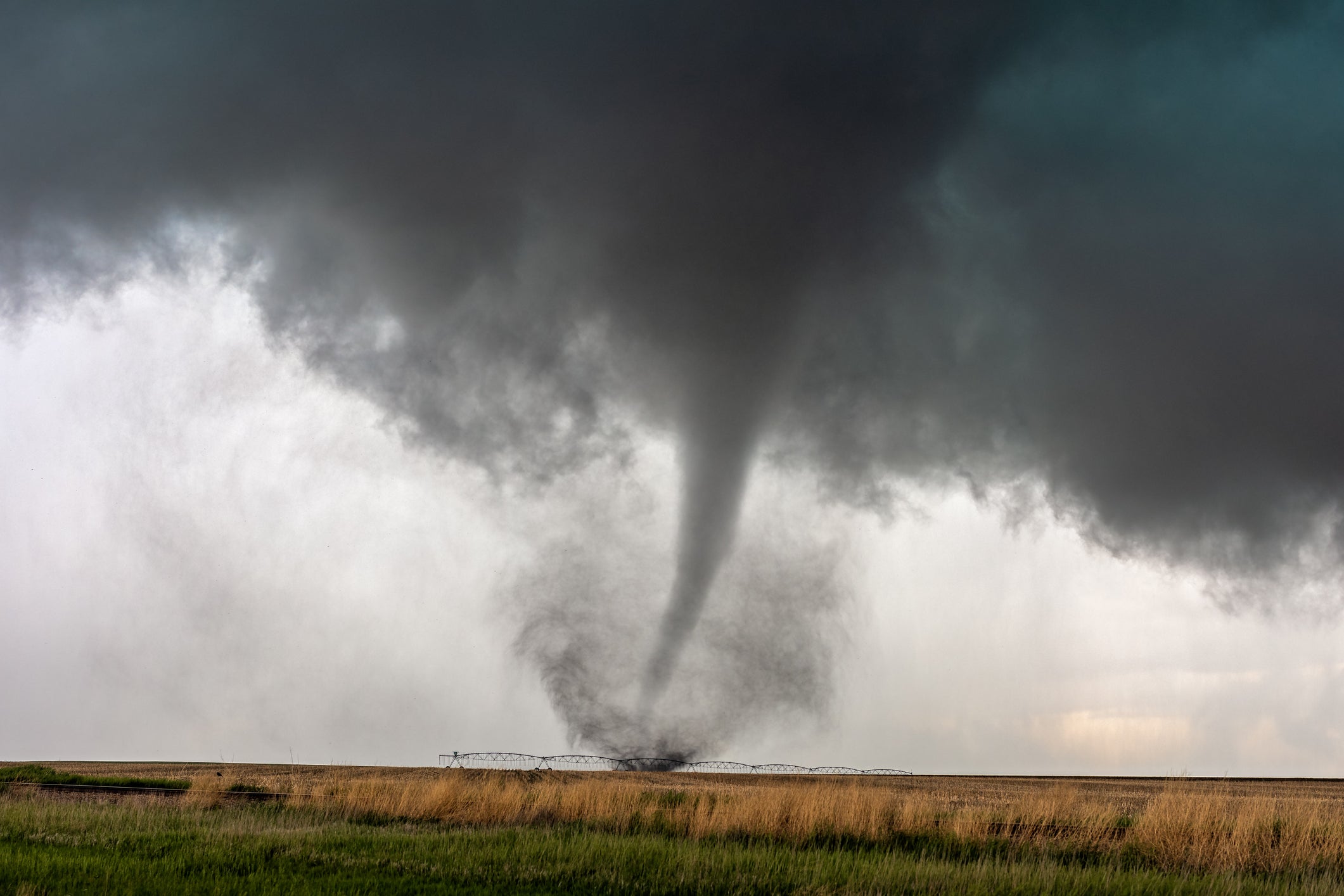Tornadoes, the swirling vortexes of wind capable of immense destruction, are a natural phenomenon that captures both our awe and fear. As they tear through landscapes with ferocious power, they leave behind devastation and despair. Yet, understanding tornado activity is crucial for safeguarding lives and property. In 2024, one state in the United States has experienced a staggering number of tornadoes, highlighting the need for heightened awareness and preparedness.
Understanding Tornadoes
Tornadoes are violent columns of rotating air that extend from a thunderstorm to the ground. These swirling funnels can vary in size and intensity, ranging from relatively harmless dust devils to massive tornadoes with wind speeds exceeding 200 miles per hour. They typically form within severe thunderstorms, known as supercells, under specific atmospheric conditions.
Formation and Characteristics
Tornadoes form when warm, moist air clashes with cold, dry air, creating instability in the atmosphere. The updrafts and downdrafts within a thunderstorm produce a rotating column of air, which, under the right conditions, can extend downward to form a tornado. Tornadoes are often accompanied by intense winds, hail, and lightning.
Factors Contributing to Tornado Occurrence
Several factors contribute to the formation and intensity of tornadoes, including atmospheric instability, wind shear, and topography. Additionally, factors such as temperature differentials, humidity levels, and the presence of a triggering mechanism, such as a cold front or dryline, influence tornado development.
Tornado Alley: A Hotspot for Tornadoes
Tornado Alley is a region in the central United States known for its high frequency of tornadoes. Stretching from the southern plains of Texas to the northern plains of South Dakota, Tornado Alley encompasses parts of several states, including Texas, Oklahoma, Kansas, Nebraska, and South Dakota.
States Included in Tornado Alley
While Tornado Alley is not an official geographical designation, it is broadly recognized as a region prone to tornado activity. States within Tornado Alley experience a higher frequency of tornadoes compared to other regions, earning the area its reputation as a tornado hotspot.
Reasons for High Tornado Activity in Tornado Alley
The unique geographic and meteorological features of Tornado Alley contribute to its high tornado activity. The region's flat terrain, coupled with the clash of warm, moist air from the Gulf of Mexico and cold, dry air from the Rocky Mountains, creates ideal conditions for tornado formation.
The State with the Most Tornadoes in 2024
In 2024, the state of Oklahoma has experienced the highest number of tornadoes, surpassing all other states in tornado frequency. With its location squarely within Tornado Alley, Oklahoma is no stranger to severe weather events, including tornadoes.
Factors Contributing to the High Number of Tornadoes
Several factors contribute to Oklahoma's status as the state with the most tornadoes in 2024. Its geographical location, favorable atmospheric conditions, and history of tornado activity make it particularly prone to tornadoes. Additionally, population density and urbanization increase the likelihood of tornadoes affecting communities.
Impact of Tornadoes on the State and Its Residents
The high number of tornadoes in Oklahoma has significant implications for the state and its residents. Tornadoes can cause widespread damage to homes, businesses, and infrastructure, leading to displacement, injuries, and loss of life. The psychological toll of living in a tornado-prone area can also be considerable, as residents grapple with the constant threat of severe weather.
Historical Data Analysis
Analyzing historical tornado data provides insights into long-term trends and patterns in tornado occurrence. By comparing tornado frequency in 2024 with data from previous years, meteorologists and researchers can identify changes in tornado activity and assess their implications.
Comparison of Tornado Frequency in the Current Year with Past Years
Comparing tornado frequency in 2024 with data from previous years reveals fluctuations and trends in tornado activity. While individual years may experience variations in tornado counts, examining data over multiple years helps identify overarching patterns and anomalies.
Trends and Patterns in Tornado Occurrence
Historical data analysis may reveal trends such as seasonal variations in tornado activity, clusters of tornadoes occurring in specific regions, or shifts in tornado intensity. Understanding these trends enables forecasters and emergency managers to anticipate and prepare for future tornado outbreaks.
Implications for Future Tornado Preparedness
Insights gained from historical data analysis inform strategies for enhancing tornado preparedness and resilience. By identifying areas at higher risk of tornadoes and understanding the factors contributing to tornado occurrence, communities can implement proactive measures to mitigate the impact of tornadoes and protect lives and property.
Safety Measures and Preparedness
Tornado preparedness is essential for minimizing the risks associated with these destructive storms. Implementing safety measures and preparedness strategies can help individuals and communities stay safe during tornadoes and reduce the potential for injuries and fatalities.
Importance of Tornado Preparedness
Being prepared for tornadoes involves having a plan in place and knowing how to respond when a tornado warning is issued. Preparedness efforts include creating emergency kits, designating shelter areas, and staying informed about weather conditions.
Tips for Staying Safe During Tornadoes
During a tornado, seeking shelter in a sturdy building or underground shelter is paramount. If caught outdoors, finding a low-lying area and covering your head can offer some protection. Avoiding windows, seeking shelter in interior rooms, and listening to weather alerts are critical safety measures.
Community and Government Initiatives for Tornado Preparedness
Communities and government agencies play a vital role in promoting tornado preparedness through education, outreach, and infrastructure improvements. Initiatives such as tornado drills, public awareness campaigns, and the establishment of storm shelters enhance community resilience and response capabilities.
Climate Change and Tornado Activity
The relationship between climate change and tornado activity is a topic of ongoing scientific research and debate. While tornadoes are complex phenomena influenced by various factors, there is evidence to suggest that climate change may impact tornado

